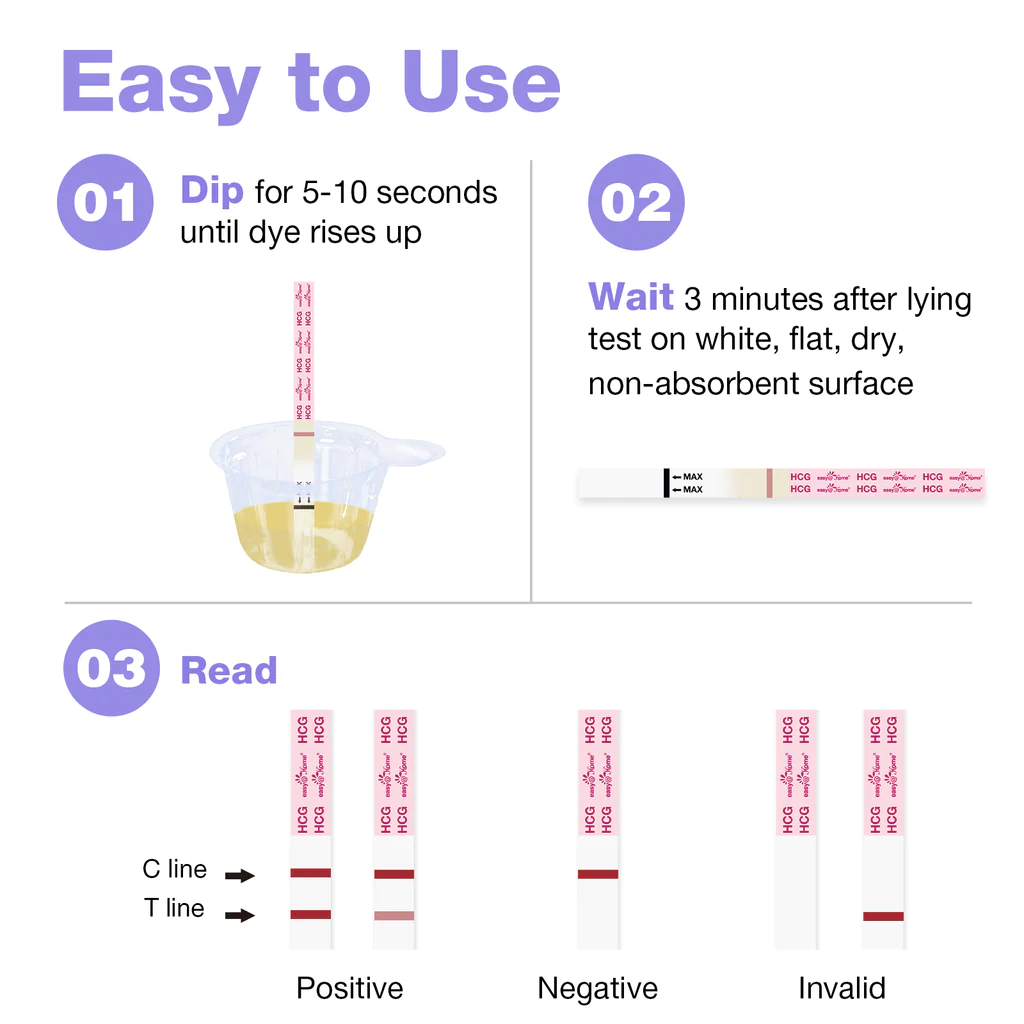A lot of women have the desire to have children, and becoming a mother is an exciting, happy, and sometimes anxious journey. Taking a pregnancy test is the first step, and it may be a roller coaster. A mixture of optimism and uncertainty surrounds the results waiting period, which may be stressful.
Fortunately, at-home pregnancy kits are available for individuals looking for a discrete and cosy approach to managing this important time. These trustworthy instruments are simple to locate and operate. They give women the confidence to take charge of their search and conduct private in-home investigations to locate the solution.

What is a pregnancy test?
A pregnancy test is a diagnostic tool used to determine whether you are pregnant. A positive test result means that the woman is pregnant. However, a negative test result means that the woman is not pregnant. These tests identify the hormone human chorionic gonadotropin (HCG) in your urine or blood. (Read More: Urinary Tract Infection During Pregnancy Leads To Complications; How Can You Treat It)
When should I take a pregnancy test?
You should be tested to make sure you’re pregnant if you think you might be. The sensitivity of home pregnancy tests varies. Pregnancy can be identified by some tests as soon as 10 days after fertilisation. However, you should wait until after a missed period to get an accurate result.

Recall that even if you are pregnant, taking a test too soon might result in a false negative. Thus, think about getting another test if you have a negative result and then miss your period.
Types of Pregnancy Tests
There are two primary kinds of pregnancy tests:
- Blood tests: Another type of pregnancy test involves checking a blood sample, but they are less common due to their expense and comparable results to urine tests. This type of test includes drawing a small blood sample from a vein in your arm. Blood tests confirm the presence of the pregnancy hormone and quantify its concentration. Blood tests are more sensitive than urine tests, detecting minimal HCG levels. These tests provide accurate results within seven to 10 days post-conception.
- Urine tests, also known as home pregnancy tests, are the most common type and do not require a prescription. Urine tests are typically conducted at home, although they can also be performed at a healthcare provider’s office.
At-home Pregnancy Test
A pregnancy test at home uses women’s urine to detect human chorionic gonadotropin. A kit includes an absorbent strip with a display window and a sample well to examine the presence of this hormone. These tests, accessible in most drug or grocery stores, offer a convenient and cost-effective option. The accuracy of home pregnancy test kits is usually 99% when used correctly.
There are three ways to do at-home pregnancy tests:
- Collect urine in a clean cup, then apply one to several drops onto a chemical strip.
- Directly place the pregnancy test strip in the urine stream while urinating.
- Dip the test strip into the urine collected in a cup.

Most at-home tests can detect HCG in urine about 10 days after conception. However, taking the test after a missed period, usually around 14 days post-conception, lowers the risk of a false-negative result.
How do I check for pregnancy at home?
Here’s a step-by-step guide on how to check for pregnancy at home using a kit:

- Carefully understand the instructions provided with the kit. Each brand may have slightly different instructions, so be sure to go through the package insert thoroughly before taking the test.
- Open the package to reveal the testing device and the well to absorb urine.
- Gather your first-morning urine in a clean container (the concentration of HCG is highest in your first-morning urine, so try to take the test in the morning to get the most accurate result)
- Using a clean dropper, take a specified amount of the urine specimen.
- Keep the pregnancy test device within reach.
- Dispense three drops of the specimen into the sample well. Some tests may involve alternative methods, such as dipping the absorbent tip of the test strip into the urine stream for a few seconds or placing the strip in a cup containing the collected urine.
- Depending on the test, you may have to wait up to 5 minutes for the results to appear. Look for the indicator lines according to the instructions:

-
- Two lines typically indicate a positive test, meaning you are pregnant.
- One line typically indicates a negative test, meaning you are not pregnant.
- If one line is dark and the other is light, it indicates an invalid result due to insufficient HCG in the urine. In such cases, it is advisable to repeat the test the following day.
Some tests may have additional lines or indicators, so ensure you understand the specific results chart for your test.


